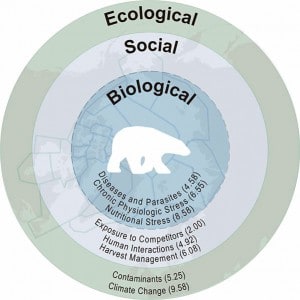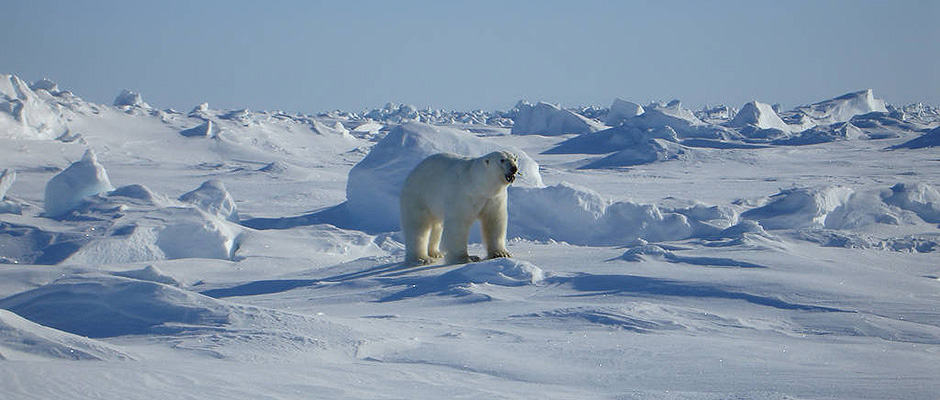Share this article
DDT, PCBs Could Affect Polar Bear Hormones
Sitting at the top of the food chain as the world’s largest land carnivore has its benefits. You have your choice of food and few predators to confront.
But a series of new studies shows that being the top dog may be detrimental for polar bear (Ursus maritimus) development and fertility as contaminants like DDT and PCBs accumulate in their bodies.
“Hormone levels are actually affected, and this may cause effects on the metabolism of the animals,” said Bjorn Jenssen, a professor at the Norwegian University of Science and Technology and an author on two of the recent studies. “They may become more sluggish and slower. They may be less attentive. Maybe it could change their behavior.”
These chemicals, which originate from plastic pollution in the water and environmental contaminants, are swallowed up by smaller organisms and fish, which are in turn eaten by the seals that make up a large part of polar bear diet. As the chemicals move higher up this chain, they accumulate in higher quantities until they become “bio-magnified” in polar bears, according to Jenssen.

This image shows eight threats that will affect polar bear health in the next 20 years.
Image Credit: Patyk et al.
One of the studies, conducted in eastern Greenland, looked at the effects of the contaminants on thyroid hormones of polar bears. They found that these hormones — important for our memory and motor functions — had high levels of PCBs and DDT. “The levels of these contaminants are above these threshold levels for effects,” said Jenssen, the senior author for the study. He said the animals they tested with the highest levels of contaminants were likely affected by them.
The study was a unique opportunity offered through co-operation between the researchers and Inuit hunters legally allowed to kill the bears. But because of limited access, the researchers only tested blood and tissue samples from the kidney, liver, muscles and brains of seven different animals. “You can’t go out to shoot polar bears just to do research. You have to get samples from people who are allowed to hunt them for other reasons.” Jenssen is careful to point out that due to the small sample size of bears tested for hormonal contaminants, it was difficult to say for sure what the possible impacts could be.
Polar Bear Fertility
Jenssen, the senior author of the other study released this month in Environmental Research, and other researchers extracted blood samples from polar bears tranquilized from darts filed from helicopters in the remote Norwegian archipelago of Svalbard, which sits about halfway between that country and Greenland. They tested this blood to find that DDT and PCBs can have a negative impact on female polar bear sexual hormones.
“The regulation of sex hormones is disturbed. That is quite worrying,” Jenssen said. It could affect polar bear fertility, but this was difficult to prove as researchers would have to follow individual polar bears around and see if they were successful at giving birth.
But the study also tested four-month old polar bear cubs for contaminants and found high levels in their blood, likely because high levels of PCBs and DDT are transferred to the cubs through their mothers’ milk.
“The cubs are much more exposed to these compounds than the mothers are,” Jenssen said of the Svalbard bears, and worries about the particular effects they have on growing bears.
Although the bears tested in the two studies were different animals and no cubs were tested in the Greenland study, it’s likely the chemical contaminants are also affecting their thyroid hormones, which has implications for growth and development.
But there are signs that things are improving, likely due in part to bans on some of the agricultural pesticides containing these contaminants.
“We compared animals that were caught in 1998 with cubs that were caught in 2008, and actually we see that contaminant levels have decreased by around 50 percent,” Jenssen said. “That’s good news.”
Header Image: Image Credit: Eric Regehr, USFWS








